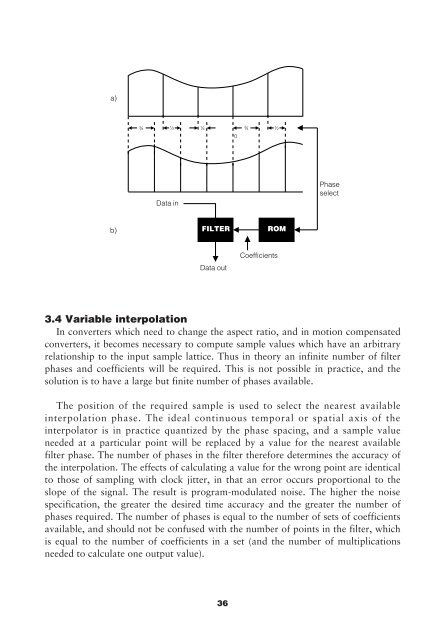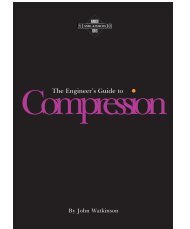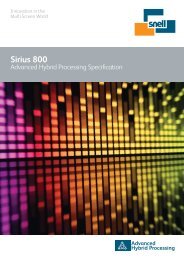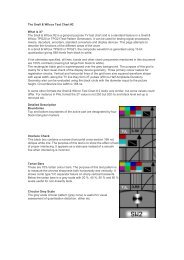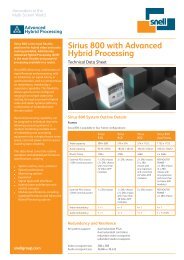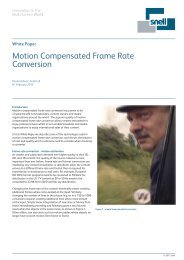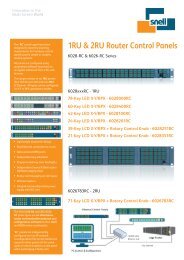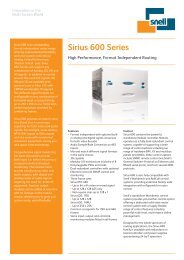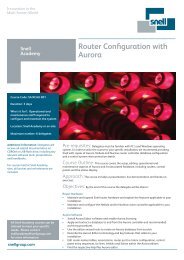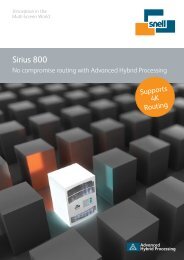The Engineer's Guide to Standards Conversion - Snell
The Engineer's Guide to Standards Conversion - Snell
The Engineer's Guide to Standards Conversion - Snell
Create successful ePaper yourself
Turn your PDF publications into a flip-book with our unique Google optimized e-Paper software.
a)<br />
Data in<br />
Phase<br />
select<br />
b)<br />
FILTER<br />
ROM<br />
Data out<br />
Coefficients<br />
3.4 Variable interpolation<br />
In converters which need <strong>to</strong> change the aspect ratio, and in motion compensated<br />
converters, it becomes necessary <strong>to</strong> compute sample values which have an arbitrary<br />
relationship <strong>to</strong> the input sample lattice. Thus in theory an infinite number of filter<br />
phases and coefficients will be required. This is not possible in practice, and the<br />
solution is <strong>to</strong> have a large but finite number of phases available.<br />
<strong>The</strong> position of the required sample is used <strong>to</strong> select the nearest available<br />
interpolation phase. <strong>The</strong> ideal continuous temporal or spatial axis of the<br />
interpola<strong>to</strong>r is in practice quantized by the phase spacing, and a sample value<br />
needed at a particular point will be replaced by a value for the nearest available<br />
filter phase. <strong>The</strong> number of phases in the filter therefore determines the accuracy of<br />
the interpolation. <strong>The</strong> effects of calculating a value for the wrong point are identical<br />
<strong>to</strong> those of sampling with clock jitter, in that an error occurs proportional <strong>to</strong> the<br />
slope of the signal. <strong>The</strong> result is program-modulated noise. <strong>The</strong> higher the noise<br />
specification, the greater the desired time accuracy and the greater the number of<br />
phases required. <strong>The</strong> number of phases is equal <strong>to</strong> the number of sets of coefficients<br />
available, and should not be confused with the number of points in the filter, which<br />
is equal <strong>to</strong> the number of coefficients in a set (and the number of multiplications<br />
needed <strong>to</strong> calculate one output value).<br />
36


